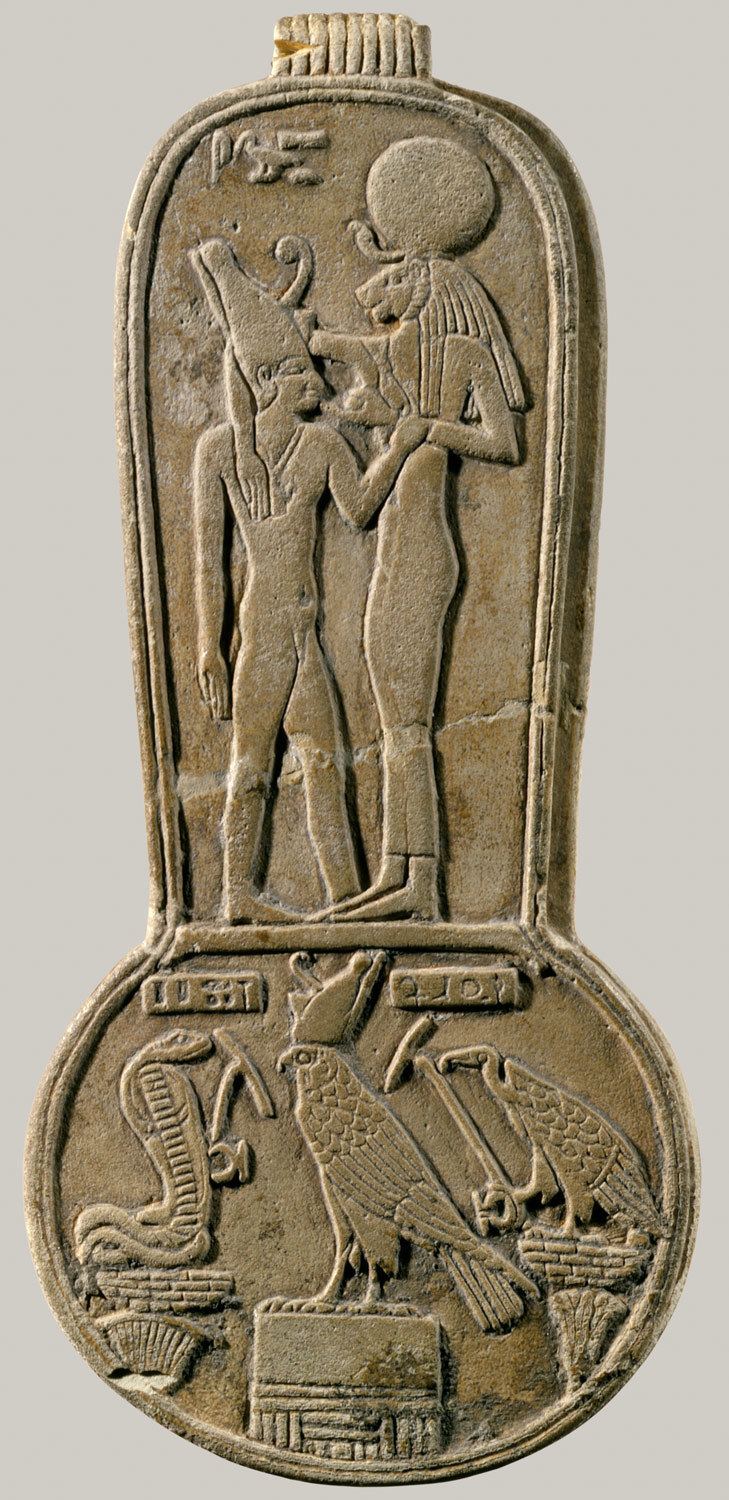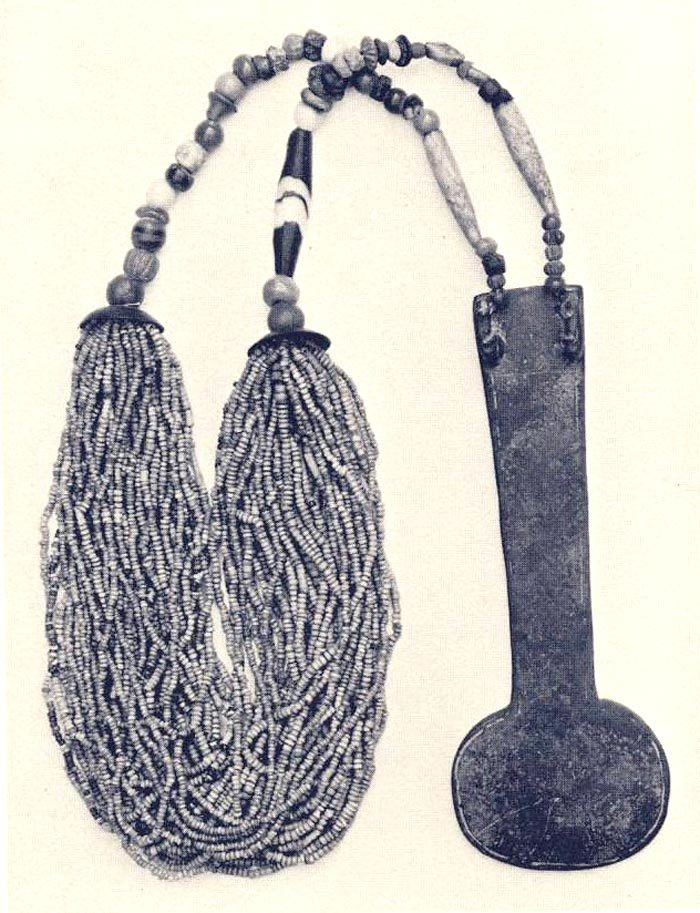 | ||
Menat (ancient Egyptian mnj.t) was a name used for the goddess Hathor. With a slightly different hieroglyphic spelling, it referred to an ancient Egyptian artifact which, like the sistrum, was closely connected with the goddess Hathor. It was held in the hand by its counterpoise and used as a rattle by Hathor's priestesses. Often it was worn as a protective amulet, even by Apis bulls, the sons of Hathor.

The menat comprised a plate termed an aegis (Greek for "shield"), worn on the chest, to which strands of beaded strings were attached. The other ends of the strings were tied to a counterweight which dangled on the wearer's back. The aegis was often made of faience, but other materials as varied as leather and bronze were also used. It was often inscribed or bore depictions of deities associated with Hathor, such as the one of Sekhmet displayed to the right.
The necklace was meant to ensure good luck and fortune and to protect against evil spirits. It was also worn for protection in the afterlife and is often found buried with the dead, given as a grave gift since Ramesside times (the Nineteenth and Twentieth Dynasties that comprise the last two-thirds of the period known as the New Kingdom). Worn by women, it was expected to foster fruitfulness and good health, while among men it signified virility.



